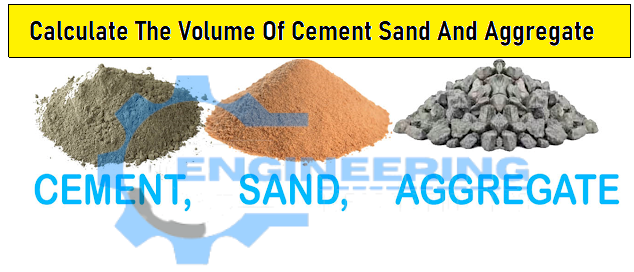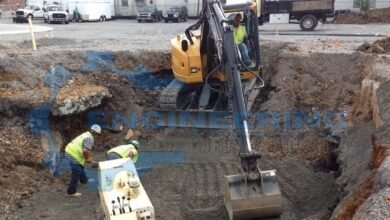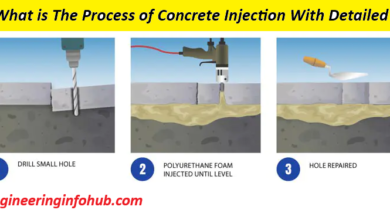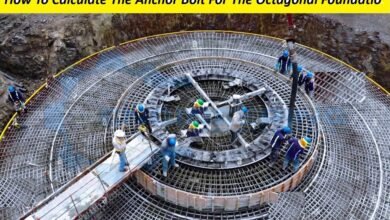Calculate The Volume Of The Cement Sand And Aggregate
Volume Of Cement Sand and Aggregate For Slab |Volume Of Cement Sand and Aggregate For Beam| Volume Of Cement Sand And Aggregate For Column

Calculate The Volume Of Cement Sand And Aggregate
In this post i will discuss about the calculation of soncrete materials.Calculate The Volume Of Cement Sand And Aggregate.Volume Of Cement Sand and Aggregate For Slab |Volume Of Cement Sand and Aggregate For Beam| Volume Of Cement Sand And Aggregate For Column
when we find the volume of any objects its means the we use three dimesions Length, Height, Width or Breadth.The multiplication of these three quantites is equal to volume of that object.
We covered some Basic Surface Area and Volume Formulas.
For Slab
lets suppose we have three dimesion
Length =5m
breadth = 3m
thickness = 0.125
Volume =length×breadth×Thickness = 5 ×3 ×O.125 = 3.75m³
For Beam
lets suppose we have three dimesion
Length =5m
breadth = 0.6m
thickness = 0.3m
Volume =length×breadth×Thickness = 5 x 0.6 x 0.3 = 3.75 m³
For Column
lets suppose we have three dimesion
Length =5m
breadth = 3m
thickness = 0.125m
Rectangular Column,
Volume = Height×Breadth×Width = 5 X 0.6 X 0.3 = 0.9 m³
Read More
Calculate The Bricks For Circular Manhole
-
Bar Bending Schedule For The Staircase
-
How To Calculate The Estimation Of Building Construction
-
Estimate The Concrete Volume For The Staircase
For Circular Column
radius =0.15m
height= 0.35m
Volume = πr²×h= 3.141256 x (0.15)2 X 5 = 0.35 m³
Now the Concrete Ingredients Calculation
For Cement, Sand and Coarse Aggregate.
This is a Volumetric Calculation.
supoose we need 2.000m³ of concrete for M20 Concrete Mix (Mix Ratio, M20 = 1 : 1.5 : 3)
some of concrete ratio= 1 + 1.5 + 3 = 5.5
NOW Cement Quantity = Cement / Sum of ratio ) x total volume of Concrete
Cement = 1/5.5 x total volume of Concrete = (1/5.5)x2 = 0.3636 m³
we know the Density of Cement = 1440 kg/ m³ = 0.3636 X 1440 = 523 kg = 10.5 says 11 bags
Sand Quantity = ( Sand / sum of ratio)xtotal volume of Concrete
Sand =(1.5/5.5) x 2 = 0.5454 m³
Coarse Aggregate Quantity = (Coarse Aggregate / Sum of ratio) x total volume of Concrete
Coarse Aggregate = (3/5.5) * 2 = 1.09 m³
Water Cement Ratio
AS per standard (IS 10262 (2009), Water-Cement Ratio for the Concrete as 0.45
Requried of Amount of Water =Water Cement Ratio X Volume of Cement
Amount Of Water = 0.45×0.3636 m³ = 0.16362 m³
we Know
Unit Weight of Water = 1000 litres/m³
Required of Amount of Water = 0.16362 X 1000 = 163.62 litres
Now complete the Quantites of all materials
we need 11 bags of cement, 0.5454 m³ of sand, 1.09 m³ of Coarse aggregates and 163.62 litres of water.

Read More
-
Calculate The Formwork For Columns Beam Girder And Slab
-
What Are The Causes Of Building Cracks
-
Calculate The Bar Bending Schedule For Retaining Wall
-
How To Calculate The Bricks Quantity For The Room








2 Comments